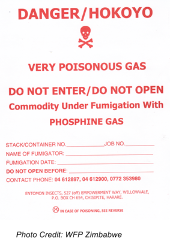- What We Do
- Agriculture and Food Security
- Democracy, Human Rights and Governance
- Economic Growth and Trade
- Education
- Environment and Global Climate Change
- Gender Equality and Women's Empowerment
- Global Health
- Humanitarian Assistance
- Transformation at USAID
- Water and Sanitation
- Working in Crises and Conflict
- U.S. Global Development Lab
Speeches Shim
USAID Emergency Food Assistance
USAID Emergency Food Assistance will be implemented in accordance with the Automated Directives System (ADS) Part 204.3.10: Environmental Review in International Disaster Scenarios (ADS 204) stipulations for International Disaster Assistance (IDA) and non-IDA funded Emergency Food Assistance. When all requisite exemption criteria are met, these activities are exempted under 22 CFR 216, with the exception of the procurement and/or use of pesticides. These exemption criteria are set forth in ADS 204.3.10(b). For emergency food assistance projects that are multi-year, the regular USAID development food assistance requirements for environmental compliance will apply.
For all exempted activities, the standards of The Sphere Handbook: Humanitarian Charter and Minimum Standards in Humanitarian Response apply. (See ADS 204.3). See additional guidance on environment in humanitarian action in the Sphere Thematic Sheet on Reducing environmental impact in humanitarian response.
Pesticides for Agriculture, Health, Commodities, and Construction
The analyses provided here were developed prior to the USAID reorganization but continue to apply.
Agriculture
USAID has developed a Programmatic PERSUAP for Fall Armyworm (FAW) Management in Africa to support control operations of the Fall Armyworm.
For any proposed locust control please reach out to the BHA Bureau Environmental Officer, through the USAID AOR.
Health
The USAID PEA for Integrated Vector Management Programs for Malaria Vector Control is an umbrella evaluation of environmental and human health issues related to insecticide use in Malaria Vector Control programs. This PEA streamlines the preparation of country- and activity-specific environmental assessments and promotes implementation of activities that adhere to uniform standards and best practices.

Commodity Fumigation
All USAID Emergency Food Assistance must protect valuable, life-saving agricultural commodity from insect infestation in warehouses at ports and distribution points globally. Commodity is treated with the highly-effective, but very toxic, pesticide phosphine gas. To ensure the safe and effective use of this gas, USAID conducted a Programmatic Environmental Assessment (PEA) for Commodity Protection by Phosphine Fumigation in USAID Food Aid Programs which identified gaps and corrective actions for fumigation in warehouses, in particular, emphasizing issues of pesticide resistance reduction and integrated pest management approaches. See additional guidance in the USAID TOPS Commodity Management and Fumigation Resource Library.
Construction
The Global USAID Construction PERSUAP conducts the 12-factor environmental compliance and climate risk analysis of eight active ingredients approved for use in the chemical control of termites and rodents in vertical build construction. The PERSUAP also contains templates and best practice guidelines for implementing partners to develop project-specific PERSUAP Supplements and IPM plans.

Comment
Make a general inquiry or suggest an improvement.